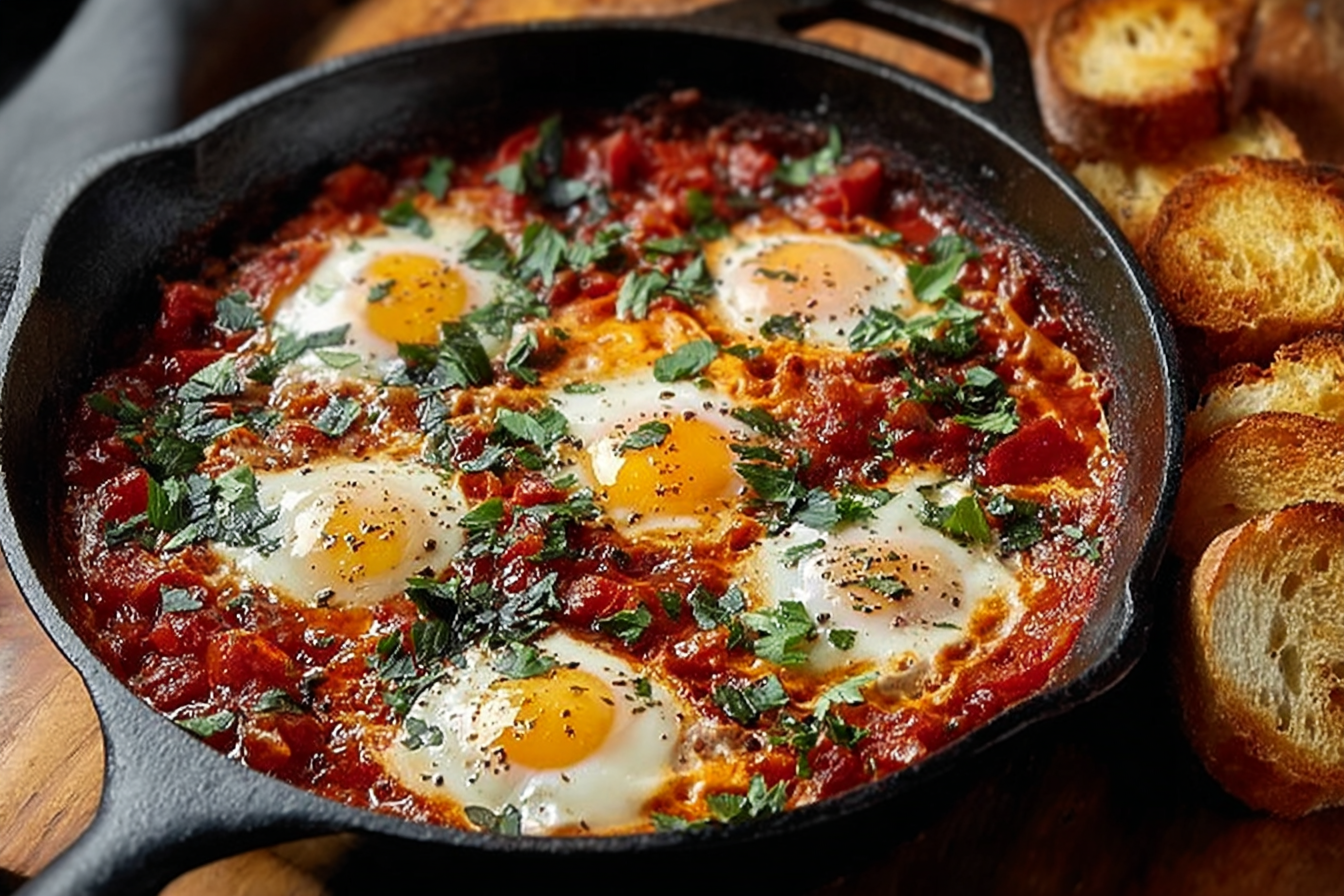Introduction
Light and Fluffy Sourdough Discard Doughnuts Recipe Nothing beats the comforting aroma of fresh doughnuts, especially when they’re homemade. But have you ever thought about putting your sourdough discard to good use by turning it into a batch of pillowy, sweet treats? Sourdough discard doughnuts are delightfully airy and bursting with subtle tang, offering a unique spin on a classic comfort food. In the coming sections, we’ll explore the fundamentals of sourdough discard, walk you through the detailed process of making the dough, guide you on shaping and frying, and finally share tips on how best to serve and store these delectable doughnuts. Let’s dive in.
Understanding Sourdough Discard
Sourdough baking has grown in popularity over the years for both its flavor and health benefits. Home bakers around the world have discovered that a bit of tang in their dough can elevate breads, pastries, and, as you’ll see here, doughnuts, to a whole new level. Central to this phenomenon is the concept of “discard,” that leftover portion of sourdough starter that often gets tossed away during feedings.
The Basics of Sourdough
Sourdough starter is made up of flour, water, and naturally occurring wild yeasts and bacteria. These microorganisms, particularly lactobacilli, feed on the sugars in the flour, producing carbon dioxide (leading to leavening) and lactic acid (imparting a tangy flavor). Over time, the starter becomes a living culture that bakers nurture and feed regularly.
When you feed a sourdough starter, you typically remove a portion of it often referred to as the “discard” before adding fresh flour and water. This practice keeps the starter healthy and prevents it from growing too large. While many people used to simply throw this discard away, bakers have discovered that the slightly tangy leftover can be used in pancakes, waffles, pizza dough, and, of course, our star of the show: sourdough discard doughnuts.
The Role of Discard
Sourdough discard is not as potent in wild yeast activity as a fully active starter, but it still has substantial flavor compounds. When added to a doughnut batter or dough, it lends a light sour note and subtle complexity that sets it apart from other yeasted treats.
One of the beauties of using sourdough discard is its ability to enhance both the flavor and texture of doughnuts. The mild acidity can help break down some of the gluten strands, resulting in a tender, airy crumb. Unlike a purely yeast-based dough, which may rely on commercial yeast alone, this recipe incorporates the tang and the gentle rise that sourdough discard offers.
Key Ingredients for Success
To craft the ideal batch of sourdough discard doughnuts, you’ll need:
- Sourdough Discard – The hero ingredient. It influences both flavor and texture, adding that characteristic tang and slight lift.
- Flour – All-purpose flour works well for this recipe. It’s crucial for building the dough’s structure.
- Commercial Yeast – Many recipes will include a small amount of yeast to ensure a reliable rise, since the discard may not be fully active.
- Sugar – Sweetens the dough and helps with browning. You can experiment with types of sugar (e.g., white, brown, or coconut sugar).
- Eggs – Provide richness, color, and additional binding power.
- Butter or Oil – Tenderizes the dough and contributes to flavor.
- Salt – Balances sweetness and enhances flavor.
- Milk (or Dairy-Free Alternative) – Adds moisture and richness, assisting in gluten formation and taste.
Health Benefits
While traditional doughnuts might not be labeled as a health food, using sourdough discard offers a few nutritional edges:
- Easier Digestion: The fermentation process breaks down some of the complex starches, making these doughnuts gentler on the stomach.
- Natural Acids: Lactic acid in sourdough may help in nutrient absorption and regulate blood sugar spikes.
- Lower Food Waste: By using sourdough discard, you’re putting something that might otherwise be tossed out to delicious use.
Preparing the Perfect Dough
Arguably the most critical step in any baking endeavor is creating a dough with the proper consistency, taste, and structure. When making sourdough discard doughnuts, that process starts with selecting fresh, quality ingredients and following each step precisely. Remember, patience is key these doughnuts benefit from a bit of resting and gentle fermentation.
Gathering Tools
Before diving into the recipe, it’s helpful to have the right equipment on hand:
- Mixing Bowls: Have at least two; a large one for mixing the dough and another for combining the dry ingredients.
- Measuring Cups and Spoons: Accuracy is essential for consistent results.
- Kitchen Scale (Optional): Ideal for precise measurements of flour, especially if you’re used to working in grams rather than cups.
- Whisk and Wooden Spoon: For blending wet and dry components.
- Stand Mixer with Dough Hook (Optional): Makes the kneading process easier, but you can also knead by hand.
- Rolling Pin: Helps in flattening the dough to the right thickness before cutting shapes.
- Doughnut Cutter (or a 3-inch round cutter plus a smaller cutter for the center hole): Ensures uniform doughnut shapes.
- Thermometer: A candy or deep-fry thermometer to monitor oil temperature for frying.
Having these tools lined up in advance will make the process smoother from start to finish.
Essential Steps
- Activate Yeast (If Using)
- Combine warm milk (about 100-110°F) with a teaspoon of sugar and the required amount of yeast.
- Let the mixture stand for 5-10 minutes until it becomes foamy. This step ensures your yeast is alive and ready to help leaven the dough.
- Combine warm milk (about 100-110°F) with a teaspoon of sugar and the required amount of yeast.
- Combine Wet Ingredients
- In a large bowl, whisk together your sourdough discard, eggs, melted butter (or oil), and the activated yeast mixture.
- Mix until the ingredients form a smooth liquid base.
- In a large bowl, whisk together your sourdough discard, eggs, melted butter (or oil), and the activated yeast mixture.
- Blend Dry Ingredients
- In a separate bowl, combine all-purpose flour, sugar, and salt.
- Stir thoroughly to disperse the salt and sugar evenly.
- In a separate bowl, combine all-purpose flour, sugar, and salt.
- Form the Dough
- Gradually add the dry mix to the wet ingredients, stirring with a wooden spoon or using the dough hook on your stand mixer.
- Aim for a slightly sticky dough that’s still manageable.
- Gradually add the dry mix to the wet ingredients, stirring with a wooden spoon or using the dough hook on your stand mixer.
- Initial Rest
- Cover the bowl with plastic wrap or a clean cloth.
- Let the dough rest for about 15-20 minutes. This short rest allows the flour to hydrate and the gluten to relax.
- Cover the bowl with plastic wrap or a clean cloth.
Kneading and Fermentation
Kneading is where the dough develops structure and elasticity. The gentle action of kneading also helps distribute the sourdough discard evenly. If you’re kneading by hand, turn the dough onto a lightly floured surface and push, fold, and rotate it for about 8-10 minutes. If you use a stand mixer with a dough hook, you can knead for about 5-7 minutes on low to medium speed.
- Texture Check: Well-kneaded dough should be slightly tacky but not sticking excessively to your hands or the work surface. If it’s too sticky, add a small sprinkling of flour. If it’s too stiff, moisten your hands and continue kneading.
- First Rise:
- Lightly oil a large bowl and place your dough inside.
- Cover with plastic wrap or a damp cloth to prevent drying.
- Let it sit in a warm spot (around 75°F) until it roughly doubles in size. This can take anywhere from 1 to 2 hours, depending on the strength of your yeast and the warmth of your kitchen.
- Lightly oil a large bowl and place your dough inside.
During fermentation, the sourdough discard teams up with the commercial yeast to create carbon dioxide. That gas gets trapped in the dough’s gluten network, causing it to rise. The subtle tang from the discard also continues to develop.
Troubleshooting Common Dough Issues
- Dough Not Rising
- Check your yeast activation step. Was the liquid too hot or too cold?
- Ensure your kitchen environment is warm enough.
- Check your yeast activation step. Was the liquid too hot or too cold?
- Dough is Too Sticky
- Lightly dust with extra flour while kneading, but be cautious not to overdo it, as too much flour can lead to tough doughnuts.
- Lightly dust with extra flour while kneading, but be cautious not to overdo it, as too much flour can lead to tough doughnuts.
- Overly Dense Doughnuts
- This often points to insufficient kneading or not enough rest time.
- Make sure you’re not rushing the process. A proper rest allows the dough to expand.
- This often points to insufficient kneading or not enough rest time.
- Over-proofing
- If the dough rises too long, the gluten structure can collapse, leading to misshapen or greasy doughnuts after frying.
- Keep an eye on the volume during proofing, not just the clock.
- If the dough rises too long, the gluten structure can collapse, leading to misshapen or greasy doughnuts after frying.
By giving the dough sufficient time to rest and properly develop its flavor, you’ll ensure that your sourdough discard doughnuts are light, fluffy, and oh-so-tasty once they emerge from the fryer.
Shaping, Frying, and Finishing
Now that you’ve mastered mixing and fermenting, it’s time to transform that risen dough into delectable doughnuts. This stage is all about technique rolling out the dough to the correct thickness, cutting uniform shapes, maintaining the right oil temperature, and finishing them off with mouthwatering glazes or toppings.
Molding Techniques
- Punch Down and Rest
- After the first rise, gently deflate the dough by pressing down with your fist.
- Let it rest for about 5 minutes to relax the gluten.
- After the first rise, gently deflate the dough by pressing down with your fist.
- Rolling Out
- Lightly flour your work surface and rolling pin.
- Flatten the dough to about ½-inch thickness. Too thin, and your doughnuts will turn out crispy rather than fluffy; too thick, and they might not cook evenly.
- Lightly flour your work surface and rolling pin.
- Cutting Shapes
- Use a doughnut cutter or a 3-inch round cutter plus a smaller cutter for the hole.
- Place the cut doughnuts on parchment-lined baking sheets, spaced about 2 inches apart to accommodate expansion.
- Cover them lightly with plastic wrap or a dry cloth, allowing a second rise (proof) for about 30-45 minutes.
- Use a doughnut cutter or a 3-inch round cutter plus a smaller cutter for the hole.
- Doughnut Holes
- Don’t forget to save those little cutouts! Doughnut holes are perfect for quick treats and for testing your frying oil temperature before plunging an entire batch in.
- Don’t forget to save those little cutouts! Doughnut holes are perfect for quick treats and for testing your frying oil temperature before plunging an entire batch in.
Proper Frying Temperatures
For classic doughnuts with a crisp exterior and soft interior, frying is the preferred method of cooking. Follow these guidelines for best results:
- Oil Selection
- Neutral-flavored oils with high smoke points work best (e.g., canola, vegetable, or peanut oil).
- Heat your oil in a deep, heavy-bottomed pot or Dutch oven.
- Neutral-flavored oils with high smoke points work best (e.g., canola, vegetable, or peanut oil).
- Temperature Control
- Aim for an oil temperature between 350°F and 365°F (175°C–185°C).
- Use a candy or deep-fry thermometer to monitor. If the temperature drops too low, the doughnuts absorb excess oil and become greasy. If it climbs too high, they may brown prematurely without cooking through.
- Aim for an oil temperature between 350°F and 365°F (175°C–185°C).
- Frying Method
- Carefully place 2-3 doughnuts in the oil at a time, being mindful not to overcrowd the pot.
- Fry each side for about 1-2 minutes, or until golden brown.
- Use a slotted spoon or spider strainer to turn the doughnuts and remove them once cooked.
- Carefully place 2-3 doughnuts in the oil at a time, being mindful not to overcrowd the pot.
- Draining Excess Oil
- Transfer fried doughnuts to a paper towel-lined tray or wire rack.
- Let them sit for a few minutes to drain and cool slightly before adding toppings.
- Transfer fried doughnuts to a paper towel-lined tray or wire rack.
Glazing and Toppings
A big part of the fun is dressing up your doughnuts with scrumptious finishes. Here are a few ideas:
- Classic Sugar Glaze
- Whisk together confectioners’ sugar, a pinch of salt, and a few tablespoons of milk. Dip the tops of the doughnuts into the glaze and let excess drip off.
- Whisk together confectioners’ sugar, a pinch of salt, and a few tablespoons of milk. Dip the tops of the doughnuts into the glaze and let excess drip off.
- Cinnamon-Sugar
- Combine granulated sugar with ground cinnamon. Roll the warm doughnuts in the mixture for a sweet, spicy coating.
- Combine granulated sugar with ground cinnamon. Roll the warm doughnuts in the mixture for a sweet, spicy coating.
- Chocolate Ganache
- Melt semi-sweet chocolate chips with a little heavy cream or butter. Stir until smooth and glossy, then dip or drizzle over the doughnuts.
- Melt semi-sweet chocolate chips with a little heavy cream or butter. Stir until smooth and glossy, then dip or drizzle over the doughnuts.
- Fruit-Filled
- Instead of cutting a hole, skip the center cut. Fry as round discs, then pipe fruit jam or custard into the center for a cream-filled surprise.
- Instead of cutting a hole, skip the center cut. Fry as round discs, then pipe fruit jam or custard into the center for a cream-filled surprise.
- Sprinkles, Nuts, and More
- Top glazed doughnuts with crushed peanuts, rainbow sprinkles, chopped candy bars, or toasted coconut to add texture and visual appeal.
- Top glazed doughnuts with crushed peanuts, rainbow sprinkles, chopped candy bars, or toasted coconut to add texture and visual appeal.
Storage and Reheating
While sourdough discard doughnuts are undeniably best enjoyed fresh, you can store them for a day or two if needed:
- Storage: Keep doughnuts in an airtight container at room temperature for up to two days. They may lose a bit of their initial crispness, but the flavor will remain delightful.
- Reheating: Warm them in a preheated 300°F oven for 5-8 minutes, or microwave them briefly in 10-second increments until lightly warm. Be cautious not to overheat, as the toppings might melt off or become sticky.
Pro Tip: If you want to prep the dough in advance, you can shape the doughnuts and do a cold proof by placing them in the refrigerator overnight. This slows fermentation and can enrich the flavor. The next day, let them sit at room temperature for 20-30 minutes before frying as usual.
It’s the combination of perfect shaping, controlled frying, and creative finishing touches that transforms simple dough into a crowd-pleasing delight. Once you’ve mastered these steps, you can start experimenting with flavors and decorative techniques to truly make the recipe your own.
Serving Suggestions and Nutritional Insights

After all the mixing, rising, shaping, and frying, you’ve got a batch of airy sourdough discard doughnuts that are practically begging to be served. Let’s talk about how best to enjoy them, from beverage pairings to nutritional considerations and flavor adaptions.
Pairing Doughnuts with Beverages
While many of us instinctively pair doughnuts with coffee, there’s a whole world of beverage options that can complement their flavors:
- Rich Coffee Drinks
- A latte or cappuccino provides a creamy, slightly bitter companion to the sweet doughnuts.
- Espresso shots highlight the doughnuts’ subtle tang and buttery richness.
- A latte or cappuccino provides a creamy, slightly bitter companion to the sweet doughnuts.
- Tea Options
- Black teas like English Breakfast or Earl Grey have robust flavors that pair beautifully with sweet confections.
- Green teas can offer a refreshing contrast to the sweet toppings.
- Black teas like English Breakfast or Earl Grey have robust flavors that pair beautifully with sweet confections.
- Hot Chocolate
- When you’re craving an indulgent experience, combine sweet doughnuts with a rich cup of cocoa.
- Look for high-quality cocoa powders or bars to get a luxurious, not overly sweet taste.
- When you’re craving an indulgent experience, combine sweet doughnuts with a rich cup of cocoa.
- Milk Alternatives
- Almond or soy milk with a splash of vanilla can be a soothing accompaniment, particularly if you’ve gone heavy on sugary glazes.
- Almond or soy milk with a splash of vanilla can be a soothing accompaniment, particularly if you’ve gone heavy on sugary glazes.
- Fruit Juices
- If you enjoy lighter pairings, a glass of cold-pressed orange juice or a mixed berry smoothie can balance the richness of the doughnuts.
- If you enjoy lighter pairings, a glass of cold-pressed orange juice or a mixed berry smoothie can balance the richness of the doughnuts.
Nutritional Breakdown
Yes, doughnuts are a treat, but using sourdough discard can tilt the scale toward a slightly more wholesome indulgence:
- Calories: An average sourdough discard doughnut (plain, fried) might hover around 200-300 calories, depending on size and toppings.
- Carbohydrates: Expect 30-40 grams of carbs per doughnut, predominantly from flour and sugar.
- Fats: Frying naturally adds some fat content; one doughnut may contain around 8-15 grams of fat, mostly from the oil and any added butter.
- Protein: Eggs and the flour provide some protein, typically around 4-6 grams per doughnut.
- Micronutrients: Trace amounts of B vitamins and minerals like iron can be found in the flour and sourdough discard.
Sourdough fermentation can make some of the nutrients more bioavailable. Still, doughnuts are best enjoyed as an occasional treat.
Adapting for Dietary Needs
While this recipe calls for standard baking ingredients, you can modify it to suit various dietary preferences or restrictions:
- Vegan Option
- Replace milk with almond, soy, or oat milk.
- Swap butter for plant-based margarine or coconut oil.
- Replace eggs with a flaxseed or chia seed “egg” (1 tablespoon of ground flaxseed or chia seeds mixed with 3 tablespoons of water per egg).
- Replace milk with almond, soy, or oat milk.
- Gluten-Free Variation
- Use a 1:1 gluten-free baking flour blend. Keep in mind the texture may differ from wheat-based doughnuts, and you may need binders like xanthan gum.
- Use a 1:1 gluten-free baking flour blend. Keep in mind the texture may differ from wheat-based doughnuts, and you may need binders like xanthan gum.
- Reduced Sugar
- Cut back on the sugar in the dough, or use a sugar substitute such as stevia or erythritol (be mindful of differences in sweetness levels and textures).
- Cut back on the sugar in the dough, or use a sugar substitute such as stevia or erythritol (be mindful of differences in sweetness levels and textures).
- Baked Instead of Fried
- For a lighter version, you can bake the shaped doughnuts in a 375°F oven for 10-12 minutes. They won’t replicate the exact texture of fried doughnuts, but they’ll still be tasty and slightly healthier.
- For a lighter version, you can bake the shaped doughnuts in a 375°F oven for 10-12 minutes. They won’t replicate the exact texture of fried doughnuts, but they’ll still be tasty and slightly healthier.
Elevating Flavor Profiles
Make your doughnuts extra memorable by infusing bold, unexpected flavors:
- Spices
- Add warm spices like nutmeg, cinnamon, or cardamom to the dough. These bring out the tang of the sourdough discard nicely.
- Add warm spices like nutmeg, cinnamon, or cardamom to the dough. These bring out the tang of the sourdough discard nicely.
- Zests and Extracts
- Citrus zests (lemon, orange) can brighten the dough. A dash of vanilla, almond, or even maple extract in your glaze adds depth.
- Citrus zests (lemon, orange) can brighten the dough. A dash of vanilla, almond, or even maple extract in your glaze adds depth.
- Savory Notes
- For a creative spin, incorporate herbs like rosemary into the dough and top with a sweet-and-salty glaze. Think of a rosemary-caramel doughnut for a sweet-savory twist.
- For a creative spin, incorporate herbs like rosemary into the dough and top with a sweet-and-salty glaze. Think of a rosemary-caramel doughnut for a sweet-savory twist.
- Filling Combinations
- Pair different fillings with complementary glazes. For instance, fill the doughnut with a raspberry jam and drizzle with white chocolate.
- Pair different fillings with complementary glazes. For instance, fill the doughnut with a raspberry jam and drizzle with white chocolate.
- Textural Toppings
- Make your doughnuts stand out by adding crunchy elements like chopped pistachios, candied pecans, or even crispy bacon bits for adventurous eaters.
- Make your doughnuts stand out by adding crunchy elements like chopped pistachios, candied pecans, or even crispy bacon bits for adventurous eaters.
Ultimately, your sourdough discard doughnuts can be as simple or lavish as you want. Whether you stick to the classics or take a gourmet route, you’ll savor every bite knowing that you’ve transformed what used to be kitchen waste into a crowd-pleasing treat.
Light and Fluffy Sourdough Discard Doughnuts

Turn your sourdough discard into pillowy, airy doughnuts with this easy recipe. A subtle tang meets sweet richness in every bite—perfect for a weekend treat!
- Mixing Bowls
- Measuring cups and spoons
- Rolling Pin
- Doughnut Cutter
- Thermometer
- Deep Fryer or Heavy-Bottomed Pot
Dough
- 1 cup sourdough discard
- 2 cups all-purpose flour
- 1 packet active dry yeast (about 2¼ tsp)
- 1/2 cup milk (warm)
- 2 eggs
- 1/4 cup butter (melted)
- 1/4 cup sugar
- 1 tsp salt
Toppings
- cinnamon-sugar (optional)
- glaze or chocolate (optional)
Activate the yeast by combining warm milk, a teaspoon of sugar, and yeast. Let sit for 5–10 minutes until foamy.
In a bowl, whisk sourdough discard, eggs, melted butter, and the activated yeast mixture.
In a separate bowl, combine flour, sugar, and salt. Gradually mix with wet ingredients to form a soft dough.
Cover and rest the dough for 20 minutes, then knead until smooth (about 8 minutes). Let rise for 1–2 hours until doubled.
Roll dough to ½-inch thickness. Cut out doughnuts and place on parchment-lined trays. Let rise again for 30–45 minutes.
Heat oil to 350°F. Fry doughnuts in batches, 1–2 minutes per side, until golden. Drain on paper towels.
While warm, coat with cinnamon sugar or glaze as desired.
For a vegan version, substitute plant milk, plant-based butter, and flax eggs. You can also bake the doughnuts at 375°F for 10–12 minutes.
FAQ
Can I use 100% sourdough discard without commercial yeast?
Yes, but expect a longer proofing time. The dough may take significantly longer to double in size since discard has lower yeast activity than a fully active starter. You’ll also want to ensure that your discard is relatively fresh, not weeks old, for better results.
What if my kitchen is too cold for proofing?
You can create a warmer environment by preheating your oven to its lowest setting for a couple of minutes, turning it off, and then placing your covered dough inside. Make sure the dough is not exposed to direct heat. Alternatively, set your dough near a warm window or on top of the refrigerator.
How do I prevent the oil from smoking during frying?
Use a high-smoke-point oil like canola, peanut, or vegetable oil. Keep a close eye on the temperature with a thermometer and adjust your heat source to maintain 350°F–365°F. Overheating the oil not only risks smoking but also leads to unevenly cooked doughnuts.
Why do my doughnuts taste too sour?
Sourdough discard can become more acidic the longer it sits unused. If you’re sensitive to sour flavors, use discard that’s no more than a day or two old. You can also balance the flavor by adding an extra tablespoon of sugar or sweet glaze to offset any tartness.
Is there a way to cut down on frying mess?
Frying inevitably involves hot oil and some splattering. Using a deep, heavy-bottomed pot can help reduce spills. Keep paper towels or a wire rack nearby to drain excess oil. You could also opt for an electric deep fryer with a temperature control feature for a tidier experience.
Can I freeze leftover doughnuts?
Yes. Allow them to cool completely, then store in a freezer-safe container or bag for up to 2 months. Thaw them at room temperature and reheat gently in the oven for 5-8 minutes at 300°F. Keep in mind that iced or glazed doughnuts may lose some of their original texture after freezing.
Conclusion
Sourdough discard doughnuts perfectly embody the resourceful, flavorful essence of sourdough baking. By repurposing something that might otherwise end up in the trash, you create a dough that yields tender crumb, subtle tang, and irresistible aroma. When paired with creative toppings, thoughtful frying techniques, and a dash of personalization, these doughnuts become a showstopper for any brunch table, office celebration, or late-night sweet craving.
We hope this detailed guide has equipped you with the knowledge and confidence to try your hand at making these light and fluffy creations. Experiment with glazes, fillings, and toppings to make the recipe uniquely yours. And remember, the true beauty of baking lies not just in the final product, but in the shared moments and memories you create along the way. Happy frying!










2 responses to “Light and Fluffy Sourdough Discard Doughnuts Recipe Magical Crisp (4 Steps)”
[…] more baking tips for delicate textures? Check out our sourdough doughnut […]
[…] Explore more baking science in our fluffy light and fluffy sourdough discard doughnuts! […]